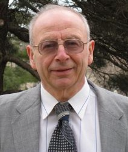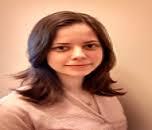Sessions and Tracks
Track 01: Advanced Organic & Inorganic Chemistry
Organic chemistry is a chemistry sub discipline involving the scientific study of the structure, properties, and reactions of organic compounds and organic materials, i.e., matter in its various forms that contain carbon atoms. Study of structure includes many physical and chemical methods to determine the chemical composition and the chemical constitution of organic compounds and materials. Study of properties includes both physical properties and chemical properties, and uses similar methods as well as methods to evaluate chemical reactivity, with the aim to understand the behaviour of the organic matter in its pure form (when possible), but also in solutions, mixtures, and fabricated forms. The study of organic reactions includes probing their scope through use in preparation of target compounds (e.g., natural products, drugs, polymers, etc.) by chemical synthesis, as well as the focused study of the reactivity’s of individual organic molecules, both in the laboratory and via theoretical study. Inorganic chemistry deals with the synthesis and behaviour of inorganic and organometallic compounds. This field covers all chemical compounds except the myriad organic compounds (carbon-based compounds, usually containing C-H bonds), which are the subjects of organic chemistry. The distinction between the two disciplines is far from absolute, as there is much overlap in the sub discipline of organometallic chemistry. It has applications in every aspect of the chemical industry, including catalysis, materials science, pigments, surfactants, coatings, medications, fuels, and agriculture.
Track 02: Analytical Chemistry
Analytical techniques spans nearly all areas of chemistry but involves the development of tools and methods to measure physical properties of substances and apply those techniques to the identification of their presence (qualitative analysis) and quantify the amount present (quantitative analysis) of species in a wide variety of settings, analytical chromatography will be used in various fields for separation and analytical biochemistry is used to detect various samples. Chemistry Conferences focuses on electrochemical methods, quality assurance, qualitative analysis, quantifying nature, quantitative analysis, gravimetric methods, evaluating analytical data, spectroscopic methods and Standardizing analytical methods.
Track 03: Green and Sustainable Chemistry
Green chemistry, also called sustainable chemistry, is an area of chemistry and chemical engineering focused on the designing of products and processes that minimize the use and generation of hazardous substances. Environmental chemistry focuses on the effects of polluting chemicals on nature whereas green chemistry focuses on the environmental impact of chemistry, including technological approaches to preventing pollution and reducing consumption of non-renewable resources.
Track 04: Physical Chemistry
Physical Chemistry is the study of macroscopic, atomic, subatomic, and particulate phenomena in chemical systems in terms of the principles, practices, and concepts of physics such as motion, energy, force, time, thermodynamics, quantum chemistry, statistical mechanics, analytical dynamics and chemical equilibrium. , in contrast to chemical physics, is predominantly (but not always) a macroscopic or supra-molecular science, as most of the principles on which it was founded relate to the bulk rather than the molecular/atomic structure alone (for example, chemical equilibrium and colloids).
Track 05: Theoretical Chemistry
Theoretical chemistry is the examination of the structural and dynamic properties of molecules and molecular materials using the tools of quantum chemistry, equilibrium and no equilibrium statistical mechanics and dynamics. Theoretical chemistry seeks to provide theories and explanations for chemical observations whilst also posing questions to be answered by future experiments. Playing a key role in physical chemistry, it uses the laws of physics to predict molecular structure, dynamics, bonding, reactivity, physical properties and spectroscopic response.
Track 06: Polymer Chemistry
Polymer chemistry is a sub-discipline of chemistry that focuses on the chemical synthesis, structure, chemical and physical properties of polymers and macromolecules. The principles and methods used for polymer chemistry are common to chemistry sub-disciplines organic chemistry, analytical chemistry, and physical chemistry. Many materials have polymeric structures, from fully inorganic metals and ceramics to DNA and other biological molecules; however, polymer chemistry is typically referred to in the context of synthetic, organic compositions. Synthetic polymers are ubiquitous in commercial materials and products in everyday use, commonly referred to as plastics, rubbers, and composites. Polymer chemistry can also be included in the broader fields of polymer science or even nanotechnology, both of which can be described as encompassing polymer physics and polymer engineering.
Track 07: Pharmaceutical Chemistry
Pharmaceutical chemistry is the study of drugs, and it involves drug development. This includes drug discovery, delivery, absorption, metabolism, and more. There are elements of biomedical analysis, pharmacology, pharmacokinetics, and pharmacodynamics. Pharmaceutical chemistry work is usually done in a lab setting. Pharmaceutical chemistry involves cures and remedies for disease, analytical techniques, pharmacology, metabolism, quality assurance, and drug chemistry. Many pharmaceutical chemistry students will later work in a lab. Pharmaceutical chemistry leads to careers in drug development, biotechnology, pharmaceutical companies, research facilities, and more. Studying pharmaceutical chemistry allows students to contribute to life-saving remedies, enhance the speed of delivery of new medications, and help others. Pharmaceutical chemistry also includes other branches of study such as pharmacokinetics, pharmacodynamics, and drug metabolism. These are important for learning the effects that drugs have on the body.
Track 08: Materials Chemistry
Materials chemistry involves the use of chemistry for the design and synthesis of materials with interesting or potentially useful physical characteristics, such as magnetic, optical, structural or catalytic properties. The interdisciplinary field of materials science, also commonly termed materials science and engineering involves the discovery and design of new materials, with an emphasis on solids. The intellectual origins of materials science stem from the Enlightenment, when researchers began to use analytical thinking from chemistry, physics, and engineering to understand ancient, phenomenological observations in metallurgy and mineralogy. Materials science still incorporates elements of physics, chemistry, and engineering. As such, the field was long considered by academic institutions as a sub-field of these related fields. Beginning in the 1940s, materials science began to be more widely recognized as a specific and distinct field of science and engineering, and major technical universities around the world created dedicated schools of the study. Materials science is a syncretic discipline hybridizing metallurgy, ceramics, solid-state physics, and chemistry. It is the first example of a new academic discipline emerging by fusion rather than fission. Thus, breakthroughs in materials science are likely to affect the future of technology significantly.
Track 09: Biochemistry
Biochemistry can be defined as the science concerned with the chemical basis of life. The cell is the structural unit of living organisms. Thus, biochemistry can also be described as the science concerned with the chemical constituents of living cells and with the reactions and processes, they undergo. By this definition, biochemistry encompasses large areas of cell biology, of molecular biology, and of molecular genetics. The major objective of biochemistry is the complete understanding, at the molecular level, of all of the chemical processes associated with living cells. To achieve this objective, biochemists have sought to isolate the numerous molecules found in the cells, determine their structures, and analyse how they function.
Track 10: Chemical Engineering
Chemical engineering is a branch of engineering that applies physical sciences (physics and chemistry), life sciences (microbiology and biochemistry), together with applied mathematics and economics to produce, transform, transport, and properly use chemicals, materials and energy. A chemical engineer designs large-scale processes that convert chemicals, raw materials, living cells, microorganisms and energy into useful forms and products. It is a process engineering which mainly comprises of the concepts of unit operation, unit process and chemical technology.
Track 11: Chemistry in Clinical Research
Clinical chemistry (also known as chemical pathology, clinical biochemistry or medical biochemistry) is the area of chemistry that is generally concerned with analysis of bodily fluids for diagnostic and therapeutic purposes. It is an applied form of biochemistry (not to be confused with medicinal chemistry, which involves basic research for drug development). The discipline originated in the late 19th century with the use of simple chemical reaction tests for various components of blood and urine. In the many decades since, other techniques have been applied as science and technology has advanced, including the use and measurement of enzyme activities, spectrophotometry, electrophoresis, and immunoassay. There are now many blood tests and clinical urine tests with extensive diagnostic capabilities.
Track 12: Computational Chemistry
Combinatorial chemistry comprises chemical synthetic methods that make it possible to prepare a large number (tens to thousands or even millions) of compounds in a single process. These compound libraries can be made as mixtures, sets of individual compounds or chemical structures generated by computer software. Synthesis of molecules in a combinatorial fashion can quickly lead to large numbers of molecules. In its modern form, combinatorial chemistry has probably had its biggest impact in the pharmaceutical industry. Researchers attempting to optimize the activity profile of a compound create a 'library' of many different but related compounds. Advances in robotics have led to an industrial approach to combinatorial synthesis, enabling companies to routinely produce over 100,000 new and unique compounds per year.
Track 13: Electrochemistry
Electrochemistry is the branch of physical chemistry that studies the relationship between electricity, as a measurable and quantitative phenomenon, and identifiable chemical change, with either electricity considered an outcome of a chemical change or vice versa. These reactions involve electric charges moving between electrodes and an electrolyte (or ionic species in a solution). Thus, electrochemistry deals with the interaction between electrical energy and chemical change.
Track 14: Natural Product Chemistry
Chemistry of natural product is a field of organic chemistry. A natural product is a chemical compound or substance produced by a living organism that is found in nature. The term natural product has been extended for commercial purposes to refer to cosmetics, dietary supplements and foods produced from natural sources without added artificial ingredients. Natural products such as phytomedicines sometimes have therapeutic benefit as traditional medicines for treating diseases, yielding knowledge to derive active components as lead (active) components for drug discovery.
Track 15: Applied Chemistry
Applied chemistry is the application of the principles and theories of chemistry to answer a specific question or solve a real-world problem, as opposed to pure chemistry, which is an aim at enhancing knowledge within the field. Applied Chemistry is the scientific field of understanding basic chemical properties of materials and for producing new materials with well-controlled functions.
Track 16: Advanced Medicinal Chemistry
Medicinal chemistry and pharmaceutical chemistry are disciplines at the intersection of chemistry, especially synthetic organic chemistry, and pharmacology and various other biological specialties, where they are involved with design, chemical synthesis and development for market of pharmaceutical agents, or bio-active molecules (drugs). Medicinal chemistry and pharmaceutical chemistry are disciplines at the intersection of chemistry, especially synthetic organic chemistry, and pharmacology and various other biological specialties, where they are involved with design, chemical synthesis and development for market of pharmaceutical agents, or bio-active molecules (drugs). ADME is an abbreviation in pharmacokinetics and pharmacology for "absorption, distribution, metabolism, and excretion", and describes the disposition of a pharmaceutical compound within an organism. The four criteria all influence the drug levels and kinetics of drug exposure to the tissues and hence influence the performance and pharmacological activity of the compound as a drug. Sometimes, liberation and/or toxicity are also considered, yielding LADME, ADMET, or LADMET.
Track 17: Agricultural Chemistry
Agricultural chemistry is the study of both chemistry and biochemistry which are important in agricultural production, the processing of raw products into foods and beverages, and in environmental monitoring and remediation. These studies emphasize the relationships between plants, animals and bacteria and their environment. The science of chemical compositions and changes involved in the production, protection, and use of crops and livestock. As a basic science, it embraces, in addition to test-tube chemistry, all the life processes through which humans obtain food and fibre for themselves and feed for their animals. As an applied science or technology, it is directed toward control of those processes to increase yields, improve quality, and reduce costs. One important branch of it, chemurgical, is concerned chiefly with utilization of agricultural products as chemical raw materials.
Track 18: Industrial Chemistry
Industrial Chemistry is the branch of chemistry which applies physical and chemical processes towards the transformation of raw materials into products that are of benefit to humanity. Industrial inorganic chemistry includes subdivisions of the chemical industry that manufacture inorganic products on a large scale such as the heavy inorganics (chlor-alkalis, sulfuric acid, sulphates) and fertilizers (potassium, nitrogen, and phosphorus products) as well as segments of fine chemicals that are used to produce high purity inorganics on a much smaller scale. Among these are reagents and raw materials used in high-tech industries, pharmaceuticals or electronics, for example, as well as in the preparation of inorganic specialties such as catalysts, pigments, and propellants.
Track 19: Supramolecular Chemistry
Supramolecular Chemistry is the branch of chemistry beyond that of molecules and focuses on the chemical system made up of a discrete number of assembled molecular subunits of components. The forces liable for the abstraction organization might vary from weak to strong interaction given that the degree of electronic coupling between the molecular elements remains tiny with relation to relevant energy parameters of the element. We all know that the traditional chemistry focuses on the covalent bond; however supramolecular chemistry studies the weaker and reversible noncovalent interactions between molecules. The study of non-covalent interactions is fundamental to understanding several biological processes from cell structure to vision that depend upon these forces for structure and function.
Track 20: Nuclear Chemistry
Nuclear chemistry is the chemistry of radioactive such as the actinides, radium and radon together with the chemistry associated with equipment (such as nuclear reactors) which is designed to perform nuclear processes. This includes of surfaces and the behaviour under conditions of both normal and abnormal operation (such as during an accident). An important area is the behaviour of objects and materials after being placed into a nuclear waste storage or disposal site. It includes the study of the resulting from the absorption of radiation within living animals, plants, and other materials.
Track 21: Environmental Chemistry and Geochemistry
Environmental Chemistry can be defined as the study of the sources, reactions, transport, effects, and fates of chemical species in the air, soil, and water environments; and the effect of human activity and biological activity on these. Chemical measures of water quality include dissolved oxygen (DO), chemical oxygen demand (COD), biochemical oxygen demand (BOD), total dissolved solids (TDS), pH, nutrients nitrates and phosphorus, heavy metals (including copper, zinc, cadmium, lead and mercury), and pesticides. Geochemistry is a science that deals with the chemical composition of and chemical changes in the earth's crust.
Track 22: Crystal engineering
Crystal engineering is the design of molecular solids with specific physical and chemical properties through an understanding and manipulation of intermolecular interactions. Engineering strategies typically rely on hydrogen bonding and coordination bonds, but can also use other interactions, such as halogen bonds and π–π interactions. Crystal Engineering is a fast-growing area of knowledge with implications in both academicals and industrials environment. It can be defined as the rational design and synthesis of functional molecular solids. Crystal engineering has recently emerged as a method of choice for the design and construction of organic as well as metal-organic functional materials. This study was conducted in four categories: nanocrystals, Nano metal-organic frameworks, composites of polyoxometalates and also some of the Nano carbons.
Track 23: Nano Chemistry
Nano chemistry is the combination of chemistry and Nano science. Nano chemistry is associated with synthesis of building blocks which are dependent on size, surface, shape and defect properties. Nano chemistry is being used in chemical, materials and physical, science as well as engineering, biological and medical applications. Nano chemistry and other Nano science fields have the same core concepts but the usages of those concepts are different. The Nano prefix was given to Nano chemistry when scientists observed the odd changes on materials when they were in nanometre-scale size. Several chemical modifications on nanometre scaled structures, approves effects of being size dependent.
Market Analysis
Global Market Analysis
Importance & Scope:
Chemistry Conference is a best platform to present and discuss current aspect in drug research and development. Pharma chemistry is the study of interaction of chemical with living systems. It is important to discuss the pharmacological basis of therapeutics in order to maximize the benefits and minimize the risks of drugs to recipients. Hence it will be the best platform for scientists, researchers, PhD Scholars, Graduates and Post Graduates involved with drug development.
Global Business & Research Value:
Global chemicals market can be classified into OTC, generic, super generic and proprietary drugs. The proprietary drug segment is expected to drive the global pharmaceutical chemicals market during the forecast period followed by generic and OTC segment. Factors such as the growing pharmaceuticals industry coupled with advancements in functional excipients, rising adoption of orphan drugs, and increasing uptake of biopharmaceuticals, are driving the market for pharmaceutical excipients.
Global Chemicals Market: Key Research Aspects:
Market size is expected to grow from USD 1.0 billion in 2019 to USD 2.9 billion by 2024, at a Compound Annual Growth Rate (CAGR) of 22.2% during the forecast period. The major growth drivers of the graph database market include excellent real-time big data mining with visualizations of results, growing demand for systems’ capability of processing low latency queries, and the adoption of Artificial Intelligence (AI)-based graph database tools and services.
The total market value of drug delivery technology is estimated to reach USD 1,669.40 Billion by 2021 from USD 1,179.20 Billion in 2016, at a CAGR of 7.2% during the forecast period. As illustrated in the graph the worldwide prescription drug sales is $774 billion in 2017 and $811 in 2018. The prescription drug sales revenues are expected to reach over one trillion U.S. dollars by 2022. There is an increasing growth in sales of biological products as well.
This report analyzes and forecasts the market for pharmaceutical chemicals at the global and regional level. The market has been forecast based on volume (Tons) and revenue (US$ Mn) from 2017 to 2025, considering 2016 as the base year. The study includes drivers and restraints of the global pharmaceutical chemicals market. It also covers impact of these drivers and restraints on demand for pharmaceutical chemicals during the forecast period. The report also highlights opportunities in the pharmaceutical chemicals market at the global and regional level.
Global Chemicals Market: Competitive Landscape:
The report comprises profiles of major companies operating in the global pharmaceutical chemicals market. Key players operating in the global pharmaceutical chemicals market include, BASF SE, Dishman Group, Johnson Matthey, Lonza Group, Lanxess, Vertellus Holdings LLC, Jubilant Life Sciences Ltd and Porton Fine Chemicals. Market players have been profiled in terms of attributes such as company overview, financial overview, business strategies, and recent developments.
Pharmaceutical Chemistry and Analytical Chemistry together make eminent growth in the pharmacy or medical industry. Knowledge of the oncepts of drug metabolism is useful in both the design of new drugs and the improvement of existing drugs. Thus it effects the living life in affective way.
More than any other industry, the pharmaceutical sector is highly dependent on its research and development segment. Some pharmaceutical companies invest 20 percent and more of their revenues in R&D measures. This share can be significantly higher at small, research- specialized companies. The United States is a traditional stronghold of pharmaceutical innovation. The origin of most new substances introduced to the market can be traced back to the United States. Because of the steady loss of patent protection, the invention of new drugs is of vital importance for the pharmaceutical industry.
Further key findings from the report suggest:
• In terms of material, plastics and polymers held the leading market share of 38% in 2018. Plastics and polymers are being considered as ideal packaging materials by pharmaceutical companies owing to their advantages such as the availability of various types of quality and ease of manufacturing.
• In terms of product, primary pharmaceutical packaging is expected register the fastest CAGR of 8.6% over the forecast period. Demand for primary packaging is driven by the increasing consumption of protein-based, biotechnologically manufactured medications, highly viscous or low-dosage drug formulations, and a series of oncologic and ophthalmologic medications.
• In terms of end use, contract packaging is expected to register the fastest CAGR of 9.1% over the forecast period. Market players have been focusing on increasing the outsourcing of packaging activities to save on time and various expenses.
• Asia Pacific is expected to witness the fastest CAGR of 12.2% over the forecast period. Tremendous growth in population coupled with a steady economic growth in countries such as China, India, and Japan is contributing to the regional growth.
• The pharmaceutical packaging market has been witnessing intense rivalry among key participants in terms of product offerings, product innovation, and global presence.
The global pharmaceutical chemicals market has been segmented as follows:
Pharmaceutical chemicals Market: Type Analysis
• Solvents
• Reagents/Catalysts
• KSMs/intermediates
• Building blocks for APIs/Advanced intermediates
Pharmaceutical chemicals Market: Drug Type Analysis
• OTC
• Generic
• Super generic
• Proprietary
Pharmaceutical chemicals Market: Regional Analysis
• North America
• U.S.
• Canada
• Europe
• U.K.
• Italy
• Spain
• France
• Germany
• Rest of Europe
• Asia Pacific
• China
• India
• ASEAN
• Japan
• Rest of Asia Pacific
• Latin America
• Brazil
• Mexico
• Rest of Latin America
• Middle East & Africa (MEA)
• GCC
• Saudi Arabia
• UAE
• Rest of GCC
• Rest of MEA








